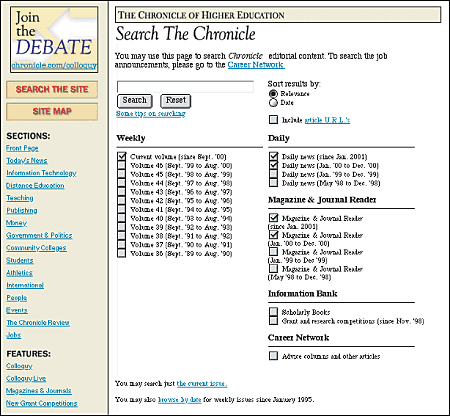Search features
Search facilities are a necessity for large sites and are convenient even for smaller sites that contain long documents. Sites that are updated frequently also require a good search engine, because your menus and site index will probably not keep pace with every change you make in the content pages of the site. But search engines are no substitute for a carefully organized browsing structure of menus and submenus. The two systems, browsing by menu and searching by keyword, complement each other — neither system alone is adequate. Keyword searches give the reader specific links to follow but with no overview of the nature and extent of your content and no feel for how you have organized the information. Menus and tables of contents are great for broad overviews, but if your readers are looking for a specific piece of information not mentioned in the contents, they may miss what you have to offer.
The search software you use will often dictate the user interface for searching. If you update your content frequently, be sure that your search engine's indexing is done at least daily. Also be sure that your readers understand exactly what content is being searched: the entire Web site or just a subsection? If your site is complex you may wish to offer readers a pop-up menu that lists the areas of your site and allows them to limit their search to a specific area. And make sure that the results page also matches the graphic design of the site.

 www.chronicle.com www.chronicle.com
|

